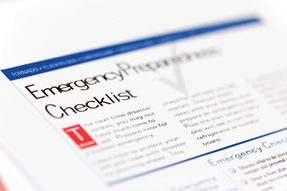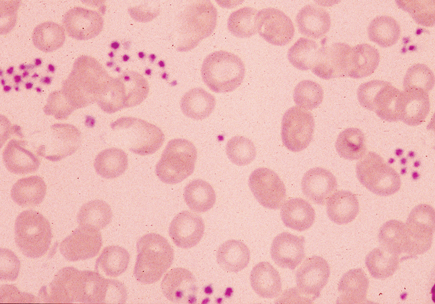Start with the basics for disaster preparedness
Doctors' offices are just as vulnerable as any business after a natural disaster. But patients won't rely on their favorite restaurant as much as they will their regular physicians in the aftermath. Learn ways to keep your doors open even when your building has been closed.
When physicians think of emergencies, they tend to think of medical needs: injuries, acute illness, or a rapid worsening in a patient's condition. But sooner or later, most internists will experience a catastrophe that affects their practice. Whether it's a natural disaster like an earthquake, flood, blizzard or storm, or a criminal act like terrorism, theft or vandalism, events beyond a physician's control can leave a practice in shambles.
Physicians and staff should prepare for disasters long before the need arises.

“Just as nonmedical businesses are vulnerable during a catastrophe, so are physicians' practices,” said Gregory A. Hood, MD, FACP, Governor of ACP's Kentucky chapter in Lexington, Ky., and medical director of his local Independent Physician Association. “When they aren't prepared, or they overextend themselves through an emergency, they may never be able to dig out and consequently wind up going out of business.”
To get started in developing a disaster plan, consider all the possibilities, then determine which scenarios are most likely to occur given the geographic location of your practice, Dr. Hood said. “Triage for what is most probable. For us in Kentucky, it would be ice storms and tornadoes, but for a practice on the East Coast it might be a hurricane or terrorist attack, and out West it might be an earthquake.”
Margo Williams, senior associate of ACP's Center for Practice Improvement and Innovation, suggests a three-pronged approach. “Think about the three things you need to do business: people, information and facilities. Then ask yourself what you would do if one, two or all three of those things weren't immediately available.”
Call for backup
A practice can't operate if no one is there. To that end, contingency planning begins at home, said Linda Landesman, DrPH, MSW, president of Landesman Consulting in New York, who has expertise in health care policy and administration.
“If you don't have power or heat at home, or you have kids who are in school and need to be picked up, you need to have a plan in place to meet your personal needs before you can get to your practice,” Dr. Landesman said.
At the office, key staff should participate in creating contingency plans, she added. “Those who have to use the plans will be able to tell you what their concerns are and what they need. Depending on the size of your staff, you could have representatives from each department, along with your office manager, give you input.”
But even if physicians and staff can get to the office, it's not going to do much good if the power is out.
“If the practice owns the building, they should have adequate generators housed in an area that is both safe for operations and protected from flooding,” Dr. Landesman said. “If the practice rents the space, they should insist that the landlord provide generators that are regularly maintained.”
Here is where it pays to be detail-oriented, said Ms. Williams. “You should know how long the generators will run, and which outlets are connected to them.” She noted that refrigeration units should be located within reach of an outlet powered by a generator.
Data protection and retrieval are critical elements of disaster planning, not only for electronic medical records, but for all information stored on a network, such as scans of the physician's credentials and licenses should his or her diplomas and other papers be destroyed, as well as contact information for staff, pharmacies and insurance companies.
Experts agree that redundancy should be built into backups and contingency plans. On-site systems are only as secure as the rooms and buildings they are in. There should be some form of off-site backup should a catastrophe render the office inaccessible or destroy it outright.
Cloud computing is an option, but physicians need to be aware of its challenges, said Dr. Hood. “There are privacy concerns as well as a question of where the locus of control is, with you or the vendor.”
Julie A. Dooling, director of health information management solutions at the American Health Information Management Association, urges physicians and practice administrators to have explicit agreements with their technology vendors regarding access during a disaster. “Ask them what their own contingency plans are, and make sure your agreements state how you will be able to get to your data,” she said.
Physicians should have a plan in place for catastrophes that damage or destroy their offices, said Ms. Williams.
“Be prepared to relocate,” she said. “Practices affiliated with integrated health systems should look into whether hospitals in the system have space where physicians can see patients. Independent practices should find out whether another building or practice in the area has available space to rent.”
She suggested making arrangements or standing agreements in advance for access to a telephone, power for laptops and other remote systems, and exam rooms.
Closing the office
It may seem like a no-brainer for physicians, staff and patients alike that the office will be closed during a blizzard or superstorm. But that doesn't mean patients won't be looking for alternatives should they need care, nor does it account for hyperlocal or building-specific catastrophes like theft, vandalism, fire, gas leaks or burst pipes. In all situations, the practice should have multiple ways to reach both staff and patients.
“You need to know how you will connect—phones, Internet, e-mail, even texts,” said Dr. Landesman. Options include establishing phone trees, where the physician and office manager call employees who then call each other; posting a notice on the practice website; and contacting radio or local television stations to make announcements.
Dr. Landesman noted that patient notification can be divvied up among the staff, depending on who has remote access to backup systems and patient contact information.
Dr. Hood suggested that physicians contact their county or local medical societies to see about creating communication hubs. “Ours has an exchange that routes all after-hours and emergency calls. We treat disaster communications as we would after-hours calls,” he said.
Financing through a catastrophe
When disaster strikes, not only can it knock the power out and deny access to materials and records, it can dry up a revenue stream. Physicians and their staff should know ahead of time what will happen and whether staff will be paid.
“My feeling is that you are obligated to your staff, and the easiest answer is to get business interruption insurance,” said Ms. Williams. She suggested that physicians talk to their insurance agents, accountants, financial planners and other professionals to find out what kind of coverage is available.
Legalities differ from state to state, said Dr. Hood. “There's no national standard for paying staff when the office is closed, and state employment laws vary enough that everyone needs to check with their state employment bureau or medical group. You should know what the laws are in your state.”
Dr. Hood has several suggestions for physicians who find themselves in a financial crunch after a catastrophe.
“Payment can be considered an advance that is worked out in overtime or it can come out of paid time off,” he said. He added that it's not unheard of for physicians to dip into their own retirement funds or forgo paying themselves to pay staff. “Do what you think is right to the greatest extent possible.”
The aftermath
Plans for returning to operation after a disaster are just as important as plans for the disaster itself. Rescheduling appointments and determining priorities among patients are crucial, said Dr. Landesman.
“Leave slots open for emergencies. There will be patients who lost their drugs or durable medical equipment and will need your help,” she said. “Set up a phone line where someone can do triage when the patients call, and route the calls to designated staff members and practitioners according to condition.”
She also suggested that practices develop a registry of particularly vulnerable patients, such as the elderly or those who are disabled. “Plan to follow up with them. See if you can team up with visiting nurse organizations or your local department of public health to make calls.”
Overall, it's wise to leave no stone unturned when developing contingency plans, said Ms. Williams. “The more you think about up front, before disaster strikes, the better off you'll be.”




